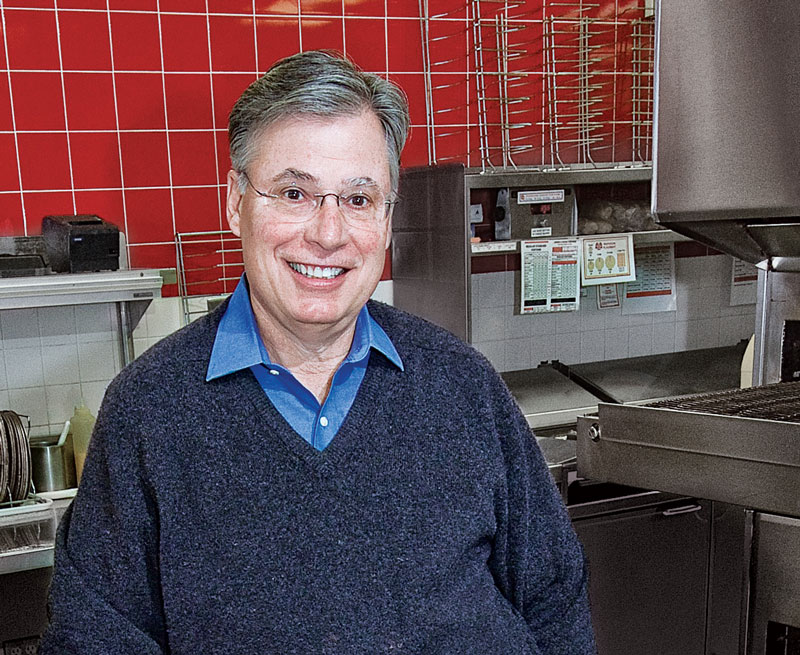Every brand wants to be bigger and more profitable. But leaders and experts in the quick-service restaurant industry say finding the correct growth rate is a delicate balance of having a clear appreciation for resource and talent capacity and an understanding of one’s appetite for risk.
Dan Simons, who runs Vucurevich Simons Advisory Group, a restaurant-consulting firm based in Maryland and Texas, says the appropriate expansion rate shouldn’t be based entirely on the popularity of a
concept.
It also depends on having the right resources and people in place to maintain consistency, deliver results, and build scalable support for operators, he says.
“It is this approach, of course combined with a compelling brand and product, that really leads to success and the ability to grow rapidly,” Simons says.
For Jack Butorac, president and CEO of Marco’s Pizza, growth rate is determined by a mixture of expectations, resource allocation, a little finesse, and a gut instinct that comes from a wealth of experience.
“I have the infrastructure that can be easily enhanced, and we have the building blocks in place in marketing and training,” Butorac says of the reason why the chain can call itself the fastest-growing pizza concept in the U.S.
Marco’s Pizza is a franchised chain founded by Pasquale Giammarco, who came to the U.S. from Italy with his family when he was nine years old. Butorac joined the team in 2004, spurring the brand’s franchise growth by focusing on its authentic Italian fare and history. The concept now has about 320 units in 26 states.
“We rebranded it, but didn’t change any of the products, and repositioned it,” he says. “That’s when we started growing.”
This past fall, Butorac put a corporate team in place to help area reps develop growth plans. After compiling the growth plans from each rep, Butorac consults with upper-level management to determine the appropriate rate of expansion.
“I will scale it back, because these are sales guys and they are a little optimistic. Based on where and how they are developing, we will ask the franchisees and the area reps what we need to support this growth,” he says.
“We are looking at about 150 stores next year; I can easily handle that,” he adds. “But if they came in and said it was 1,000, that would take a little bit more thought.”
Butorac says revenue earned from new franchises goes to building more resources, ultimately dictating the overall growth pace for the concept.
“Over the 30 years I’ve been in business, with the concepts that have failed, generally debt has been the major issue, because the consumer decided the concept was not relevant and they stopped going and they had this debt structure,” says Butorac, noting that Marco’s Pizza has very little debt.
Butorac also isn’t concerned with growing too slowly because, he says, it’s not in the brand’s DNA. “My makeup is that we are not growing fast enough,” he says.
Simons, who was a manager at casual-dining chain The Cheesecake Factory when the fledgling concept grew from five to 25 locations, says another growth test for a quick serve is on the home front.
“My belief is that until a concept really proves itself in a local market in a variety of locations—urban, suburban, unique—they should not consider expansion outside their initial trade area,” he says.
One of the biggest pitfalls of growing too quickly is that management training and development systems aren’t in place, causing a dilution effect in management. Another roadblock is encountered when the concept is inexperienced in dealing with unique challenges and doesn’t have the expertise to address under-performing stores, Simons says.
“So they end up with struggling units and they simply don’t have the expertise to solve the problems, and the growth just keeps adding more problems,” Simons says.
“Until a company can look in the mirror and say they can train and develop high-caliber managers in X number of months—and, combined with that, they know how many additional months of experience it takes a manager to become seasoned—then they really cannot forecast their growth,” he adds.
Tony Lamb, founder of shaved-ice concept Kona Ice, began franchising his concept in 2008. He says the brand had three times the number of franchise requests than he initially sold. “I wanted to control the growth,” he says. Lamb, who has a background in marketing rather than in the quick-service industry, started with 10 franchised stores in 2008 and grew to 50 units by the next year. Kona Ice launched 100 franchises in 2012 and will launch another 125 throughout this year.
The growth has been spurred in part by the infrastructure Lamb has put into place.
“It was always for me, ‘Build the infrastructure, let it grow, and pull back. Build the infrastructure, let it grow, pull back,’” the Kona Ice executive says. “Very easy, I could do 150–175 [franchise] sales next year, but I don’t want to stretch it, I don’t want to push it. I’m saying 125 and people are saying that’s audacious, and I’m thinking that’s conservative.”
Lamb relies on a number of factors when determining growth rate, including how many deposits Kona Ice has from potential franchisees for the next year.
For Kona Ice, growth also depends on certain markets, like Dallas and Houston, being completely saturated, as well as which markets are untapped.
Lamb also uses the sheer number of calls from entrepreneurs who are interested in a Kona Ice truck as another variable in determining his growth rate.
“People get on the phone with me, and they are just giddy and they are all about the pretty colors and the beautiful truck,” he says. “My broker and salespeople say I am always trying to talk everyone out of it, and for most purposes, I am. Because if I can talk them out of it, then they really weren’t involved anyway.”








